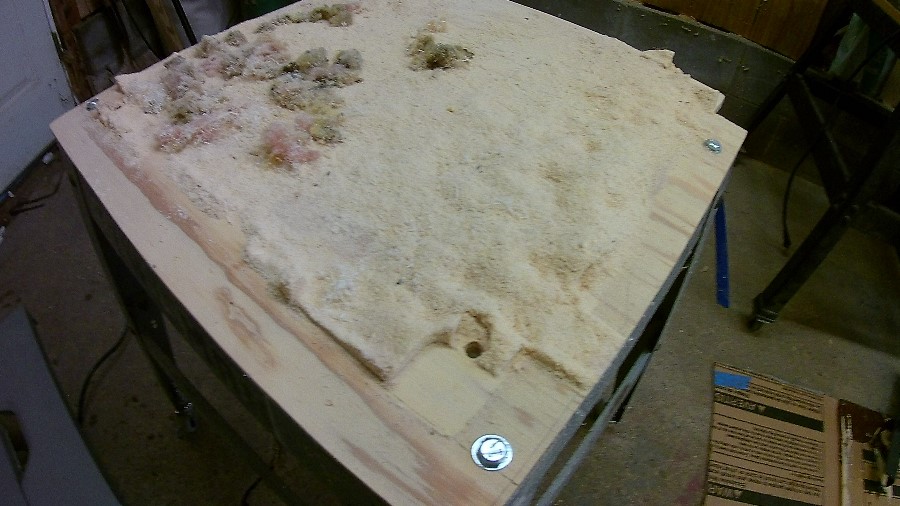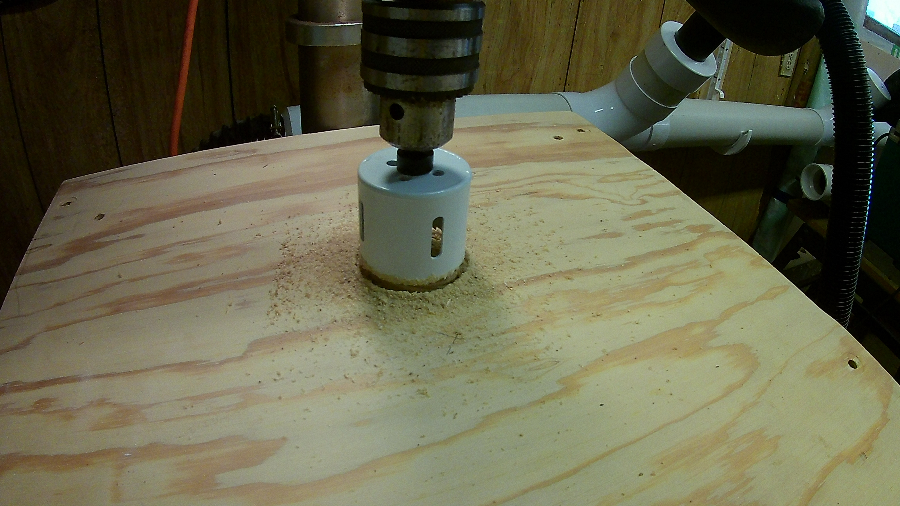I’m not the first guy to make a dust collection system and they’re not rocket science but I’m also building something totally foreign to me. I’ve never had access to a privately owned workshop that’s so awesome that it has a dust collection system. Is that a class thing? I sorta’ associate sawdust collection in some guy’s garage as a high end “hobbyists” instead of my usual dipshit mucking about with crap like trying to keep the chicken coop standing. I’m pretty excited to “level up” my shop. It feels like a well deserved luxury. Is it weird to think that way?
I have some exposure to dust collection in commercial workshops and factories. So building one based on my experience is like saying “I spent a week at the OSHA approved loading dock filling semi-trailers, I’m sure it’s similar to retrofit an old barn for loading my Dodge pickup.” I’ve limited experience to build on; which, now that I think of it, makes me as skilled as most politicians. Hopefully my project will work out better than the messes those freaks create.
First, I made a careful plan and accumulated every part I’d need.
Ha ha ha… I had you going didn’t I?
Like any redneck in an area with sparse hardware stores, I bought what I could find and threw it in a pile. The idea being it would spark the imagination with what was possible. Here’s my starting point, a pile of random parts:

Then I mounted 4″ thinwall sewer vent pipe to the wall. I cut a piece of my limited length of actual sawdust collector flex hose, and hooked it to the mounted pipe.
For those of you going ape about static, this means it’s grounded at least as far as the flexible hose location. I promise to extend it further.
I spent forever making sure the pipe was equally spaced from the wall and tabletop level. Given that nothing on my property is flat or level, it took longer than you’d think. Also, I’m going to eventually have to tear down that hideous half rotten paneling. I set it up so I can do so without having to trash the whole system.
Initial install was 10′ long. It dawned on me that an hour after the thing is done that wall would have all shorts of shit leaned against it. (Shops are like that.) So I expanded to about 15′ long… basically the whole wall. Might as well git ‘er done while the area is clear.

One other note, most people mount their pipework to the ceiling. I didn’t. I have mount points on the ceiling that matter to me. I’m forever hoisting this thing or that. Maybe it’s just me but I’m really into suspending weights when I work… it’s a thing that either comes from thinking “outside the box” or having no excess labor or help. I’d spend less time with pulleys and stuff if I’d bother to make friends who could help me move heavy stuff? Nah, fuck that. I’ll be friendless and use physics. That’s how I roll.
I put the pipe at waist level because the floor floods, the ceiling is cluttered, and the suction intake is also at waist level. I assume maximum efficiency if the sawdust isn’t lifted to the ceiling but just moved horizontally?
Once the pipe was mounted I started feeling pride in visible accomplishment. So, obviously, it was time to ignore my fancy new pipe and start messing with finicky little shit associated with the stations.
Stationary machine #1 – Table saw: It was mounted to an old “table” with no sawdust vent (I just cut a plywood base back in 2018 and bolted it down). It seems like this saw was never designed for a sawdust collection system. (Notice that it’s a Ryobi on a Craftsman table. I mentioned my unique (?) mounting method in Ryostman? Craftoby?)

That’s about 3 months of sawdust accumulation. In a few years it would get out of control. Of course mice got in there too. Damn mice get into everything!
 I had to move my drill press and get it back up and running. (It’s been collecting dust in a corner of the barn for years.) Then I treated myself to a 2″ hole saw. I was trying to stay on a shoestring budget but hole saws are pretty handy. (It’s good to have my drill press back though!)
I had to move my drill press and get it back up and running. (It’s been collecting dust in a corner of the barn for years.) Then I treated myself to a 2″ hole saw. I was trying to stay on a shoestring budget but hole saws are pretty handy. (It’s good to have my drill press back though!)

After I cut a hole in the base, I added an adapter that fits a shop vac hose. These universal adapters are very handy but cost almost $8 each. Nickel and dime y’all! I cut it to the appropriate size on a bandsaw.

Since the tablesaw had a shop vac hose hanging out of the bottom, it was time to put a T in the pipe. I also put in other T’s. In this photo the T on the right is for my thickness planer.
Note: posts about the thickness planer and Roy Underhill are below:
You can just barely see the dust collector crammed into the corner behind the drill press (which also had mice in it… damn mice!).
Lesson learned, the pipe was good and solid to the wall but nothing kept it from rotating. I built a lame little cradle of 2″x 4″ too keep it from freely spinning. It’s a dumb solution but it works (so I guess it’s not too dumb).

At this point I had to stop building for a while. It got bitter cold and I couldn’t heat the shop sufficiently to get anything done. More to follow from after it gets slightly warmer. Stay tuned…

AC.. a point of clarification.. i replied to a static comment in part 1 about grounding and bonding. sorry, it’s the aviation wrench lingo coming out. grounding is connecting a unit to a ground point…cold water pipe, grounding rod, somethin like that… bonding is joining 2 unit to that ground path. so you’d ground the collector pipe and bond your machines to that with a short piece of copper wire. that way the pipe and the machine have the same static potential and don’t arc to each other. we ground the aircraft to a point sunk in the concrete apron and bond the fuel truck to the aircraft. keeps stuff from going bang real loud.
Congratulations! Looks like a good start. But please be sure to let us know if your dog is sufficiently entertained when you get a static reawakening from the incomplete grounding of the system.
Holy crap, you guys are really into static electricity.
Just trying to make sure you aren’t TOO surprised when the fun occurs.
In a dry climate, one can build up a rather large static charge, and the discharge can be spectacular. Hopefully it won’t scare your pooch to death, nor occur when your hands are too close to rotating cutting hardware…